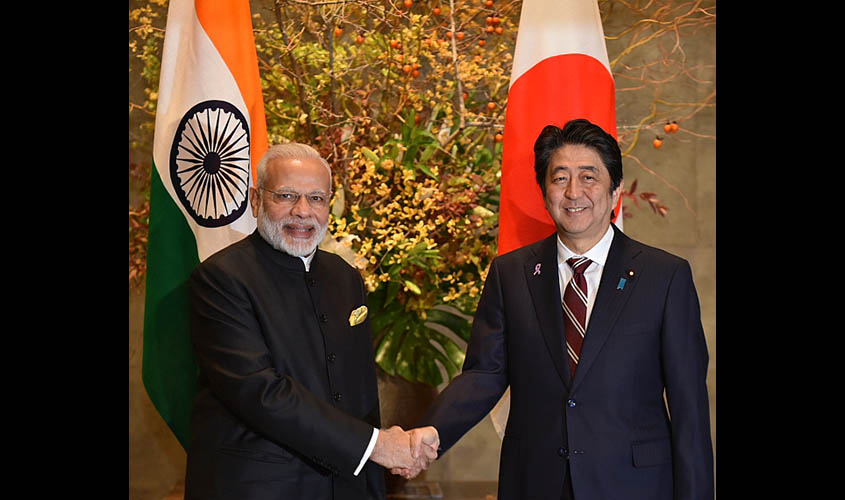 China’s policy of injecting investments and reaping disproportionate economic and strategic benefits out of it, is strikingly reminiscent of mercantilism, leading to a steep rise in Beijing’s capacity to invest further and holding unprecedented foreign exchange reserves. The mercantilist policy approach adopted by Beijing can be credited for it becoming a global economic powerhouse that is launching strategic ambitions well beyond its immediate territory and shores.
China’s policy of injecting investments and reaping disproportionate economic and strategic benefits out of it, is strikingly reminiscent of mercantilism, leading to a steep rise in Beijing’s capacity to invest further and holding unprecedented foreign exchange reserves. The mercantilist policy approach adopted by Beijing can be credited for it becoming a global economic powerhouse that is launching strategic ambitions well beyond its immediate territory and shores.
This brings to focus the Belt and Road Initiative announced by Chinese President Xi Jinping, which could well become the defining legacy of Xi’s rule. By unveiling an infrastructural blueprint, which places China at the centre of the world over land and sea links, B&R is fast becoming the launch pad from which Xi Jinping’s China aims to reshape the Indo-Pacific strategically, beginning with totalitarian geographical presence and domination by connecting the Eurasian landmass and Indo-Pacific maritime routes.
The contest for expansion in, and via, Africa is fast placing Asia’s dominant player China at odds with key challengers, Japan and India. In fact, the squabble among regional powers for greater control and say inside Africa, mirrors history. Recall the immediate post-World War II phase, when the erstwhile USSR and the US were caught in a bitter contest to veto/limit influence of the other, globally. In rolling out the Marshall Plan, with an approved funding of $12 billion in 1948, America sought to rebuild Western Europe in accordance with the Truman Doctrine. This was vital in ushering in the resurgence of European industrialisation, and needless to say, had political musings, with Western Europe gradually getting soaked into the US camp. It was the Marshall Plan that established the policy concept of US foreign aid programmes, which became a defining pillar of American foreign policy subsequently.
Not surprisingly, the USSR countered the Marshall Plan with its own version, the Molotov Plan, for sustenance of Eastern Europe, to ensure that it remained politically and economically aligned to the Soviet ideology and political future. The balance of power games and realignment of Europe back then, appears getting replicated today, in many parts of Asia, and Africa. The difference being that China has emerged as the dominant power being challenged by regional contenders including Japan and India. China’s expansionist plan in the name of the Belt and Road Initiative is being confronted with the freshly announced Indo-Japanese Asia-Africa Growth Corridor via seas. Set up primarily to deliver infrastructure and aid projects to Africa by rediscovering ancient sea-routes and creating sea corridors linking the African continent with India and countries in South and Southeast Asia, the unstated objective of the AAGC appears restricting the African continent from getting swallowed by China geo-strategically.
This, however, will be a tall order for Delhi and Tokyo. In the scheme of Chinese strategic thinking and approach, the centrality of Africa cannot get amplified any further. The 2017 African Economic Outlook showcases China’s economic footprint across Africa, with Beijing accounting for 27% of Africa’s total global exports, and investing $38.4 billion in the continent. Compared to this, India’s lines of credit to 44 countries stand at $8 billion. In addition, providing a grant assistance of $600 million to African nations, Prime Minister Narendra Modi has offered $10 billion for development projects over the next five years and pledged $29 million for the African Development Fund replenishment. Simultaneously, Japanese PM Shinzo Abe has pledged mobilising $30 billion in private- and public-sector funds to invest in Africa over the next three years to boost infrastructure building on the continent.
While AAGC is just in the initial stages of consultations to connect ports in Jamnagar (Gujarat) with Djibouti, China’s first overseas military base in Djibouti shall be up and running this summer. The base is part of a major Chinese port development project in Djibouti, with Chinese Merchants Group, a Hong Kong multinational, announcing an additional $400 million investment for Djibouti. With nearly 2,200 Chinese troops present on African soil as part of international peacekeeping missions, the Chinese base in Djibouti will be the spine for China’s naval projection in the region.
Where Japan and India could end up scoring above China would be delivering quality infrastructure borne out of a consultative process, in contrast to China’s “government-funded” Belt and Road project. Notably, Kenyan President Uhuru Kenyatta echoed the sentiments of many African states in a recent statement that Japan does not press its own views on the continent—considered an implicit reference to China that is known to be unyielding. Although the games for expanding spheres of influence among Asian powers have begun, the geo-strategic consequences of China’s overbearing economic influence sharply point towards its revisionist agenda.
Dr Monika Chansoria is a Tokyo-based Resident Visiting Fellow at the Japan Institute of International Affairs (JIIA).

